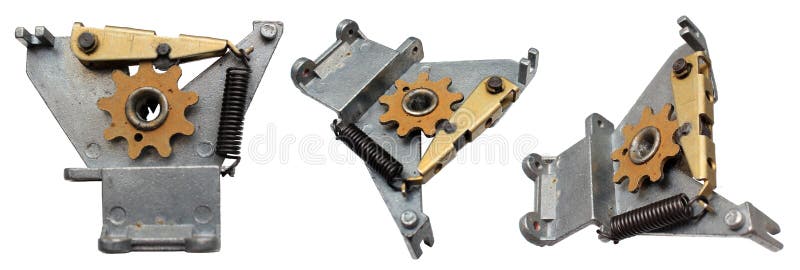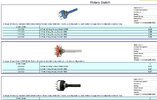Hi all,
I have a little / very basic electronics knowledge & this is my first post so please go easy on me!!!
For a while now I have contemplated trying to build a custom game controller... i am heavily into train simulators & would ideally like a locomotive power controller to add to the realism. Doesn't have to be a perfect replica of the real thing at this point but as long as it works like the real thing...
The controller has 6 positions, being:
OFF
Run Down
Notch Down
HOLD
Notch Up
Run Up
Let me explain the positions...
OFF (Obviously)
Run Down (automatically decreases the tap changer setting)
Notch Down (manually decreases the tap changer setting)
HOLD (Holds the tap changer at its current setting)
Notch Up (manually increases the tap changer setting)
Run Up (automatically increases the tap changer setting)
Does anyone know of a rotary style switch that has 6 positions, has fixed positions and sprung (or momentary) positions???
The positions OFF, Run Up, HOLD & Run Down are fixed. The positions Notch Up / Notch Down are sprung and when selected will return to the HOLD position...
Or, does anyone know of a way of creating such a switch??? Dunno if I've made any sense but hopefully someone may know what I'm on about...!!!
Thanks in advance
Eric
I have a little / very basic electronics knowledge & this is my first post so please go easy on me!!!
For a while now I have contemplated trying to build a custom game controller... i am heavily into train simulators & would ideally like a locomotive power controller to add to the realism. Doesn't have to be a perfect replica of the real thing at this point but as long as it works like the real thing...
The controller has 6 positions, being:
OFF
Run Down
Notch Down
HOLD
Notch Up
Run Up
Let me explain the positions...
OFF (Obviously)
Run Down (automatically decreases the tap changer setting)
Notch Down (manually decreases the tap changer setting)
HOLD (Holds the tap changer at its current setting)
Notch Up (manually increases the tap changer setting)
Run Up (automatically increases the tap changer setting)
Does anyone know of a rotary style switch that has 6 positions, has fixed positions and sprung (or momentary) positions???
The positions OFF, Run Up, HOLD & Run Down are fixed. The positions Notch Up / Notch Down are sprung and when selected will return to the HOLD position...
Or, does anyone know of a way of creating such a switch??? Dunno if I've made any sense but hopefully someone may know what I'm on about...!!!
Thanks in advance
Eric



